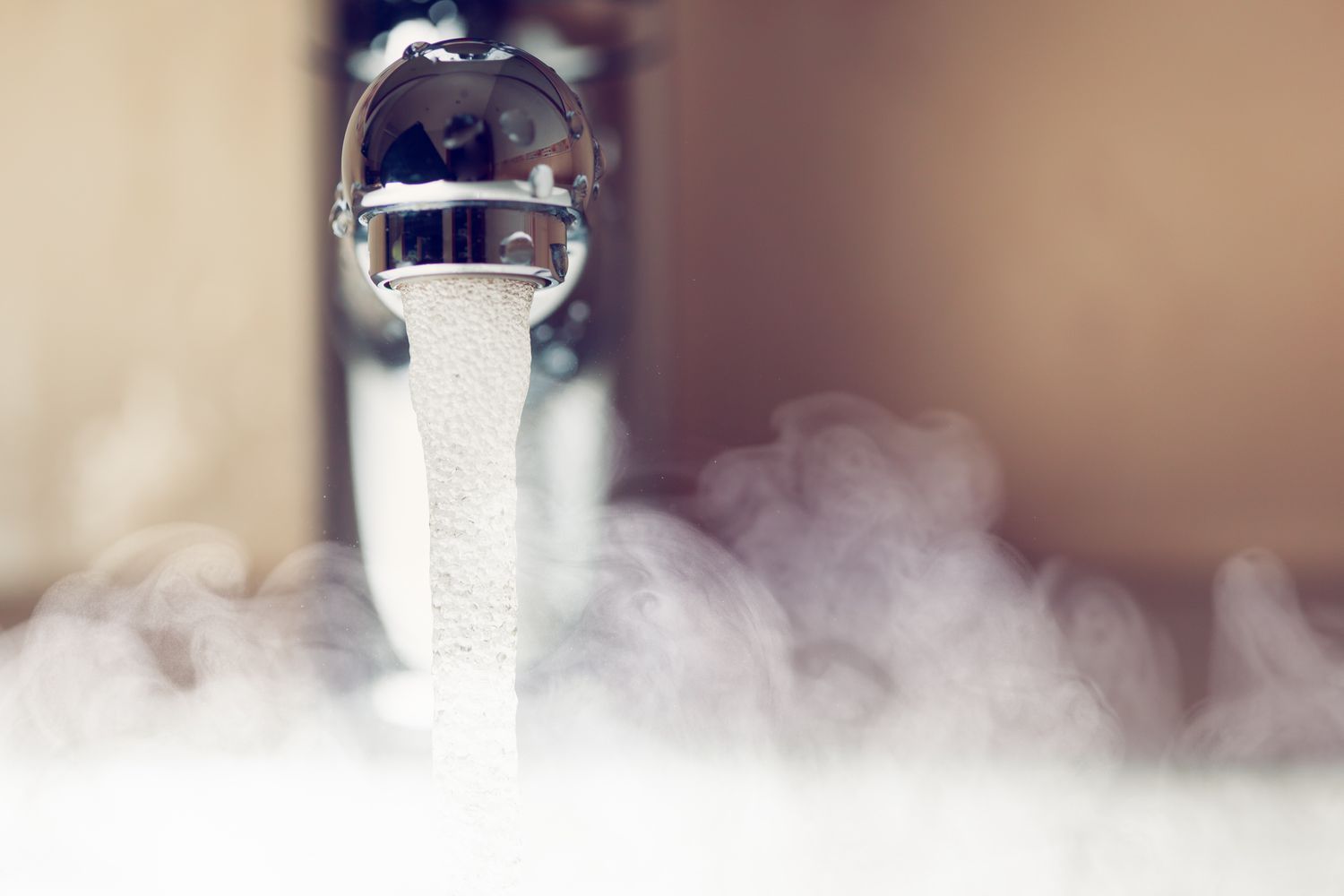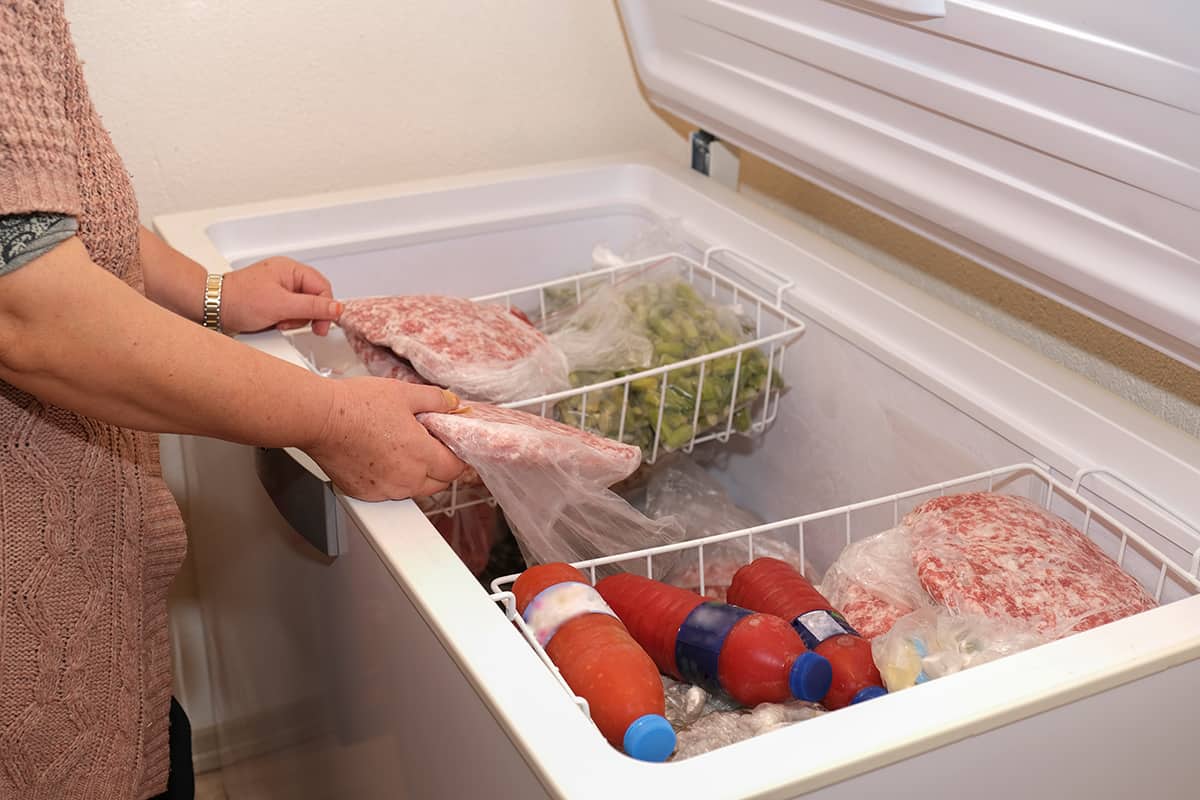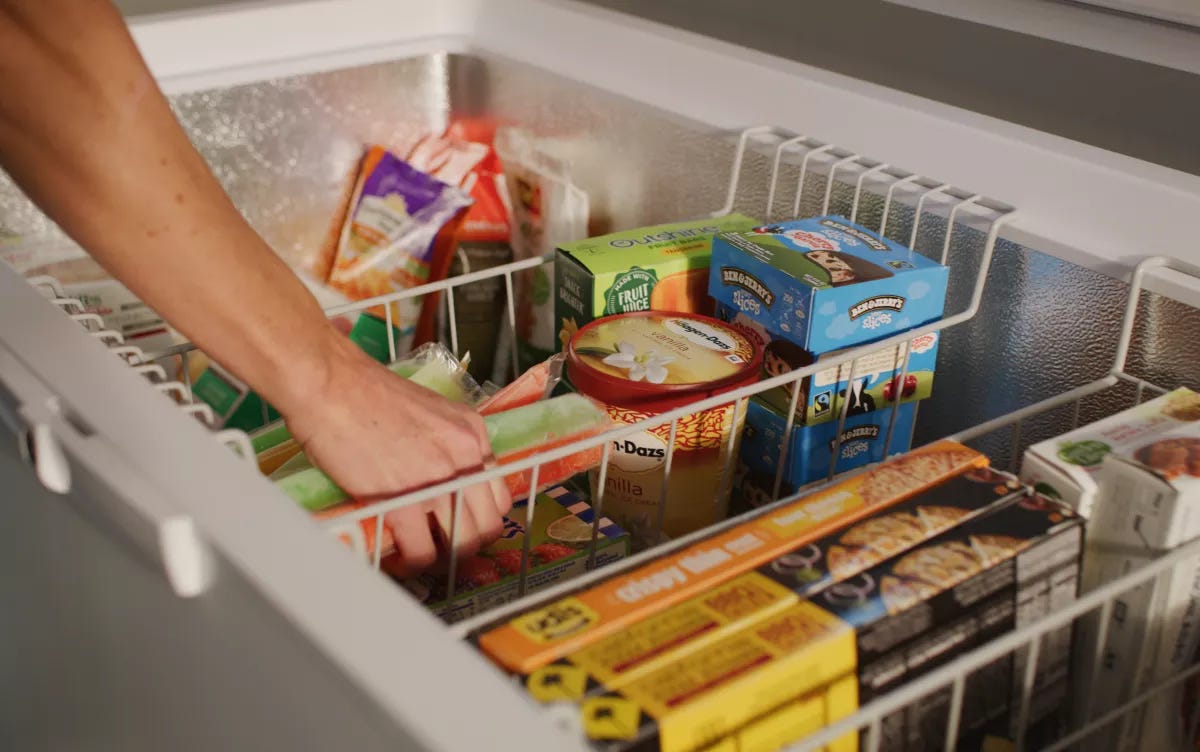Home>Articles>How Long Will A Deep Freezer Stay Cold Without Power


Articles
How Long Will A Deep Freezer Stay Cold Without Power
Modified: October 20, 2024
Discover how long a deep freezer can stay cold without power in this informative article. Get expert advice on keeping your frozen goods safe during a power outage.
(Many of the links in this article redirect to a specific reviewed product. Your purchase of these products through affiliate links helps to generate commission for Storables.com, at no extra cost. Learn more)
Introduction
Having a deep freezer is a convenient way to store a large amount of food for an extended period. However, there may be situations where a power outage occurs, leaving us wondering how long our precious frozen items will stay cold without power. Understanding the factors that influence the cooling duration of a deep freezer can help us make informed decisions and take necessary precautions.
In this article, we will delve into the intricacies of deep freezers and explore the various factors that affect their cooling duration during power outages. We will also provide some helpful tips to extend the cooling duration and ensure the safety of our frozen goods.
So, let’s dive in and uncover the secrets of how long a deep freezer can stay cold without power!
Key Takeaways:
- A well-insulated deep freezer can keep food frozen for 24 to 48 hours during a power outage, but factors like room temperature and door openings can affect this duration.
- To extend cooling duration, minimize door openings, use insulating materials, and consider backup power options. Prioritize food safety by monitoring internal temperature and discarding spoiled items.
Read more: How Long Can Cake Stay In The Freezer
Understanding the Deep Freezer
A deep freezer, also known as a chest freezer, is a household appliance specifically designed for storing frozen goods at a much lower temperature compared to a regular refrigerator. It typically has a larger capacity and is an ideal choice for those who need to store a significant quantity of food for an extended period.
Deep freezers utilize a compressor system to cool the interior, which keeps the temperature well below freezing point. This low temperature inhibits the growth of bacteria and other microorganisms, preserving the quality and freshness of the stored items.
Unlike upright freezers, which have a vertical design with shelves and drawers, deep freezers have a horizontal layout and a single compartment. This allows for maximum storage capacity and easy organization of bulky items.
Modern deep freezers often come with additional features such as adjustable thermostats, LED displays, and high-efficiency insulation. These advancements improve energy efficiency and temperature control, making deep freezers a cost-effective and reliable appliance.
It is important to mention that deep freezers, like any other electrical appliance, rely on a continuous power supply to maintain their cooling capabilities. Therefore, unexpected power outages can pose a temporary challenge, and it is crucial to understand how long the freezer can maintain the cold temperature without electricity.
Next, we will explore the various factors that contribute to the cooling duration of a deep freezer during a power outage.
Factors Affecting Cooling Duration
The cooling duration of a deep freezer during a power outage can vary depending on several factors. Understanding these factors will help us estimate how long we can expect the freezer to stay cold without electricity:
- Insulation: The quality of insulation plays a crucial role in determining the cooling duration. Deep freezers with thick and high-quality insulation can retain the cold temperature for a longer period. Insulation helps to minimize heat transfer from the surrounding environment into the freezer.
- Seal and Lid: A properly sealed lid is essential for minimizing air leakage and maintaining the cold temperature inside the freezer. Any gaps or cracks in the lid can lead to increased heat transfer, resulting in a shorter cooling duration.
- Temperature Setting: The initial temperature setting of the deep freezer also affects the cooling duration. Generally, if the freezer is set to a lower temperature, it will have a longer cooling duration because it has to work harder to reach the desired temperature.
- Frequency of Door Opening: Opening the freezer door frequently allows warm air to enter, which can significantly impact the cooling duration. Limiting the number of times the freezer door is opened during a power outage will help preserve the cold temperature for a longer period.
- Room Temperature: The ambient temperature of the room where the deep freezer is located can influence the cooling duration. If the room temperature is high, the heat transfer into the freezer will be greater, reducing the cooling duration.
- Amount of Frozen Food: The quantity of food stored in the freezer can impact its cooling duration. A fully stocked deep freezer retains the cold temperature better than a partially filled one as the frozen items help to maintain a lower overall temperature.
- Type and Condition of Food: Certain foods have a higher heat capacity, meaning they can stay cold for longer. For example, meat and poultry tend to have a greater ability to retain low temperatures compared to ice cream or fruits.
It is important to note that these factors interact with each other and may vary from one deep freezer model to another. Therefore, it is always recommended to refer to the manufacturer’s guidelines for specific information about your deep freezer’s cooling duration without power.
Now that we have a better understanding of the factors influencing the cooling duration, let’s move on to discussing the average cooling duration one can expect without power.
Thermal Insulation and Efficiency
Thermal insulation plays a vital role in the overall efficiency and cooling duration of a deep freezer. It helps to minimize heat transfer from the surrounding environment into the freezer, allowing it to maintain a low temperature for an extended period.
Deep freezers are typically constructed with various layers of insulation material, such as foam or fiberglass, which have high thermal resistance. These insulation layers are strategically placed in the walls, lid, and floor of the freezer to create a barrier against external heat.
The thickness and quality of the insulation material greatly impact the cooling duration. Deep freezers with thicker insulation have a higher thermal resistance, which means they can better resist heat flow. This results in a more extended cooling duration during power outages.
Furthermore, the efficiency of the insulation material also affects the overall energy consumption of the deep freezer. High-quality insulation with low thermal conductivity helps to maintain a constant and efficient temperature, reducing the workload of the compressor and minimizing energy consumption.
To ensure the optimal thermal insulation and efficiency of your deep freezer, consider the following:
- Check the Seal: Inspect the seal or gasket of the freezer’s lid regularly to ensure it is intact and properly sealing the unit. Any worn-out or damaged seals should be replaced promptly to maintain the effectiveness of the insulation.
- Avoid Placing Hot Items: Avoid placing hot or warm items directly into the deep freezer as this can cause a temporary increase in internal temperature. Allow food items to cool down to room temperature before storing them in the freezer.
- Keep the Freezer Full: A well-stocked deep freezer has better thermal mass, meaning that the frozen items act as insulation against external heat. Even if the freezer is not completely full, consider using freezer-safe containers or bags filled with water to fill up the empty space.
- Avoid Overfilling: While it is beneficial to keep the freezer adequately filled, avoid overfilling it as this can limit the air circulation and reduce the overall efficiency of the freezer. Allow enough space for proper airflow within the unit.
- Avoid Unnecessary Openings: Limit the frequency of opening the freezer door, especially during power outages. Each time the door is opened, warm air enters the freezer and reduces the cooling duration.
By paying attention to the thermal insulation and efficiency of your deep freezer, you can ensure longer cooling duration during power outages and optimize energy consumption.
Now that we understand the importance of thermal insulation and efficiency, let’s explore the average cooling duration a deep freezer can maintain without power.
Keep your deep freezer closed as much as possible to maintain the cold temperature. A well-insulated freezer can stay cold for up to 48 hours without power.
Average Cooling Duration without Power
The average cooling duration of a deep freezer without power can vary depending on several factors, as discussed earlier. However, as a general guideline, a well-insulated and properly sealed deep freezer can keep food frozen for approximately 24 to 48 hours without power.
It’s important to note that this estimate is based on a fully stocked freezer and with minimal door openings during the power outage. If the freezer is only partially filled, or if the door is opened frequently, the cooling duration will be shorter.
In some cases, deep freezers with advanced insulation and energy-efficient features may be capable of maintaining the freezing temperature for up to 72 hours or more. However, it’s essential to refer to the manufacturer’s guidelines and specifications for accurate information about the specific model you own.
Additionally, it’s crucial to keep in mind that the cooling duration can be influenced by environmental factors such as the room temperature and the initial temperature setting of the freezer. Warmer room temperatures and lower initial temperature settings can lead to a shorter cooling duration.
If you anticipate a prolonged power outage, it’s advisable to take necessary precautions to ensure the safety of your frozen goods. Consider alternatives such as transferring the most essential items to a cooler with ice or dry ice to extend their freshness. Use a freezer temperature monitor to keep track of the internal temperature and determine when the food might no longer be safe to consume.
Now that we have a rough estimate of the average cooling duration, let’s explore some tips to help extend the cooling duration and ensure the safety of your frozen items during a power outage.
Read more: How Long Is Breast Milk Good In Deep Freezer
Tips to Extend Cooling Duration
During a power outage, you can take several steps to extend the cooling duration of your deep freezer and preserve the quality and safety of your frozen goods. Here are some tips to consider:
- Keep the Freezer Door Closed: Limit the number of times you open the freezer door to minimize the amount of warm air entering. Each time you open the door, the cold air escapes, reducing the cooling duration. Only open the door when absolutely necessary.
- Use Insulating Materials: If you anticipate an extended power outage, consider using insulating materials to wrap around the freezer. Thick blankets, towels, or even bubble wrap can help to further insulate and retain the cold temperature inside the freezer.
- Group Frozen Items Together: Consolidate your frozen items together in the freezer to create a compact mass. This allows the items to help insulate each other and maintain a colder temperature for a longer period.
- Utilize Ice Packs or Dry Ice: Placing ice packs or dry ice inside the freezer can help to lower the overall temperature and extend the cooling duration. However, ensure proper handling and follow safety guidelines when using dry ice.
- Avoid Transferring Items: Minimize the movement of items within the freezer during a power outage. Any unnecessary shifting or rearranging can disturb the cold air flow and reduce the cooling duration.
- Plan Ahead for Power Outages: If you live in an area prone to frequent power outages, consider investing in a backup power generator or exploring alternative power sources to keep your deep freezer running during emergencies.
- Maintain a Record of Time: Keep a record of the duration of the power outage. This information will help you determine the safety of your frozen items once the power is restored. If the power outage exceeds recommended guidelines, it may be necessary to dispose of certain perishable foods.
- Monitor Internal Temperature: Consider using a freezer thermometer to monitor the internal temperature of the freezer during a power outage. This will provide a better understanding of the cooling duration and enable you to make informed decisions about the safety of your frozen items.
By following these tips, you can significantly extend the cooling duration of your deep freezer during a power outage and minimize the risk of food spoilage. Remember to prioritize food safety and discard any items that may have thawed and reached unsafe temperatures.
Next, let’s discuss some important precautions and safety measures to keep in mind when dealing with a deep freezer during a power outage.
Precautions and Safety Measures
When dealing with a deep freezer during a power outage, it’s important to prioritize safety and take necessary precautions to prevent food spoilage and potential health risks. Here are some precautions and safety measures to keep in mind:
- Do Not Open the Freezer Unnecessarily: Minimize the number of times you open the freezer door during a power outage. This helps to preserve the cold temperature inside and extend the cooling duration.
- Check the Internal Temperature: Use a freezer thermometer to monitor the internal temperature of the freezer. If the temperature rises above 40°F (4°C) for more than two hours, discard any perishable food items to ensure food safety.
- Discard Thawed or Spoiled Food: If any food items have thawed completely or show signs of spoilage such as an off smell, strange texture, or discoloration, it is best to dispose of them to avoid the risk of foodborne illnesses.
- Follow Food Safety Guidelines: Adhere to proper food safety practices when handling and storing frozen items. This includes promptly transferring perishable items to the freezer, practicing proper hygiene, and following recommended storage times for different food items.
- Have an Emergency Plan: Create an emergency plan for power outages that includes steps to take to prevent food spoilage. This can include having alternative power sources, backup ice supplies, or nearby storage options in case of a prolonged power outage.
- Recycle or Dispose of Food Properly: If you need to dispose of frozen food due to a power outage or other reasons, make sure to follow proper waste disposal guidelines. In some cases, frozen food may be eligible for composting or recycling, so check local regulations for the best option.
- Consider Backup Power Options: If power outages are frequent in your area, consider investing in a backup power generator or alternative power sources to minimize disruptions to your deep freezer.
- Regularly Maintain and Inspect the Freezer: Ensure that the deep freezer is well-maintained and in good working condition. Regularly check the seal, clean the interior, and schedule maintenance to keep the appliance functioning efficiently.
By following these precautions and safety measures, you can minimize the risk of food spoilage, ensure food safety, and maintain the efficiency of your deep freezer during power outages.
Now, let’s conclude our discussion on how to prolong cooling duration and ensure the safety of your frozen items.
Conclusion
Understanding how long a deep freezer can stay cold without power is essential for ensuring the preservation and safety of our frozen goods. While the cooling duration can vary depending on several factors, a well-insulated and properly sealed deep freezer can typically maintain the freezing temperature for approximately 24 to 48 hours during a power outage.
Factors such as insulation quality, seal integrity, room temperature, and the amount of frozen food stored inside can all influence the cooling duration. Taking steps to optimize thermal insulation, minimize door openings, and utilize insulating materials can help extend the cooling duration and preserve the quality of the frozen items.
It is important to follow safety measures during power outages, such as monitoring internal temperature, discarding thawed or spoiled food, and practicing proper food handling and storage techniques. Having an emergency plan and considering backup power options can also provide peace of mind in case of prolonged power disruptions.
By understanding the functioning of deep freezers, considering the factors that affect cooling duration, and implementing the right precautions, you can confidently navigate power outages and ensure the safety of your frozen items.
Remember to refer to the manufacturer’s guidelines for specific information on your deep freezer model and always prioritize food safety when making decisions about the storage and consumption of frozen goods.
With these insights and precautions in mind, you can confidently rely on your deep freezer to preserve your frozen items even during unexpected power outages.
Frequently Asked Questions about How Long Will A Deep Freezer Stay Cold Without Power
Was this page helpful?
At Storables.com, we guarantee accurate and reliable information. Our content, validated by Expert Board Contributors, is crafted following stringent Editorial Policies. We're committed to providing you with well-researched, expert-backed insights for all your informational needs.















0 thoughts on “How Long Will A Deep Freezer Stay Cold Without Power”